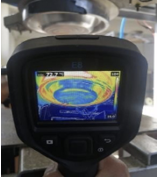
Journal Information
Title: Enfoque UTE
Editor-in-Chief: Diego Guffanti
Associate Editor: Diana Zuleta
Copyright: 2025, The Authors
Volume: 16 Issue: 3
ISSN (electronic): 1390-6542
Copyright statement: License (open-access,
https://creativecommons.org/licenses/by/4.0/)
Article Information
Date received: FEBRUARY 21, 2025
Date accepted: MAY 24, 2025
Publication date: JULY 1, 2025
Date of current version: JULY 1, 2025
Publisher: Universidad UTE (Quito, Ecuador)
Pages: 16-24
DOI: https://doi.org/10.29019/enfoqueute.1142
http://ingenieria.ute.edu.ec/enfoqueute/
Prototype of a Biodegradable Plate Made from Sugarcane Bagasse: Evaluation of Formation and Mechanical Properties
J. E. López Velástegui1*, W. H. Vaca Ortega2, C. H. Arroba Arroba3, B. M. Guamán Cando4
Abstract
This article presents the development and evaluation of a biodegradable plate prototype made from sugarcane bagasse. The research proposes sugarcane bagasse as a sustainable alternative for the manufacturing of biodegradable products and analyzes the environmental issues associated with the use of disposable plastics. Experiments were conducted to determine |the ideal proportions of potato starch, water, and sugarcane bagasse, as well as the temperature and pressure conditions required to create a plate with favorable mechanical properties.
When pressed at a temperature of 110 °C and a pressure of 8 bars, a mixture of 20 grams of sugarcane bagasse, 35 grams of potato starch, and 33 milliliters of water produced plates with the best structural integrity and without significant defects. Regarding failure energy, displacement, and maximum bending stress, the mechanical tests carried out based on ASTM D5628 and ASTM D7264 standards demonstrated that the specimens manufactured under these conditions had adequate strength.
The use of sugarcane bagasse as a raw material for manufacturing biodegradable products is feasible, offering a practical solution to reduce the environmental impact of disposable plastics. The results provide a solid foundation for research and improvements in the manufacturing process of biodegradable products from agricultural waste.
Keywords
biodegradable materials; plastic pollution; thermoforming process; agricultural waste; sugarcane bagasse.
Resumen
Un prototipo de plato biodegradable creado a partir de bagazo de caña de azúcar ha sido desarrollado y evaluado en este artículo. La investigación propone el bagazo de caña de azúcar como una alternativa sostenible para la fabricación de productos biodegradables y analiza los problemas ambientales asociados con el uso de plásticos desechables. Se llevaron a cabo experimentos para determinar las proporciones ideales de almidón de papa, agua y bagazo de caña de azúcar, así como las condiciones de temperatura y presión necesarias para crear un plato con propiedades mecánicas favorables.
Cuando se prensó a una temperatura de 110 °C y una presión de 8 bares, una mezcla de 20 gramos de bagazo de caña de azúcar, 35 gramos de almidón de papa y 33 mililitros de agua produjo platos con la mejor integridad estructural y sin defectos significativos. En cuanto a la energía de falla, el desplazamiento y la tensión máxima de flexión, las pruebas mecánicas realizadas según los estándares ASTM D5628 y ASTM D7264 demostraron que las muestras fabricadas bajo estas condiciones tenían una resistencia adecuada.
El uso del bagazo de caña de azúcar como materia prima para la fabricación de productos biodegradables es factible, ofreciendo una solución práctica para reducir el impacto ambiental de los plásticos desechables. Los resultados proporcionan una base sólida para la investigación y mejoras en el proceso de fabricación de productos biodegradables a partir de residuos agrícolas.
Palabras Clave
materiales biodegradables; contaminación por plásticos; proceso de termoformado; residuos agrícolas: bagazo de caña de azúcar.
I. INTRODUCTION
THE global search for sustainable solutions to reduce reliance on conventional plastics has intensified due to growing concerns about the environmental impact of disposable plastic products. In this context, biodegradable materials have emerged as a promising alternative to mitigate plastic pollution. Among these materials, sugarcane bagasse stands out for its abundance, low cost, and biodegradability, making it an attractive raw material for manufacturing disposable products such as plates, cutlery, and packaging [1], [2].
The urgency to find sustainable substitutes has spurred industries and researchers to explore renewable resources capable of replacing traditional plastics, especially in regions with limited waste management infrastructure. Recent studies indicate that agricultural byproducts like sugarcane bagasse can significantly contribute to the production of eco-friendly items [1], [2]. This approach harnesses residual biomass —preventing it from becoming landfill waste— and fosters a circular economy by converting it into valuable commodities.
Several investigations have demonstrated that incorporating natural fibers into biodegradable polymer matrices not only enhances mechanical performance but also improves thermal stability [3], [4]. These findings suggest that a hybrid composite system comprising sugarcane bagasse and starch-based binders can outperform conventional biodegradable materials, even in demanding applications. Furthermore, recent advances in thermoforming and simulation tools, such as Ansys, enable more precise control of process parameters, ensuring that final products meet both mechanical and environmental requirements [5]. Consequently, this study aligns with the expanding body of literature aimed at reconciling sustainability with material performance in the development of biodegradable products.
Sugarcane bagasse, a byproduct of the sugar industry, is primarily composed of cellulose, hemicellulose, and lignin, which impart a fibrous structure and mechanical strength [3], [4]. To make it suitable for biodegradable product manufacturing, this byproduct must be combined with other materials (e.g., potato starch), which acts as a binder [4], [5]. By blending sugarcane bagasse, starch, and water, followed by a thermoforming process, it is possible to develop biodegradable products that can replace conventional plastics [5], [8].
The production of biodegradable plates from sugarcane bagasse involves critical steps such as mixing components, molding under controlled heat and pressure, and evaluating mechanical properties [8], [10], [11]. These steps require thorough optimization to ensure that the final product is both practical and eco-friendly. Proper mold formation is essential to obtain a defect-free plate structure [10], and careful control of manufacturing parameters is key to minimizing issues like cracks and incomplete formation [11].
This work focuses on evaluating the formation process and mechanical performance of a biodegradable plate prototype made from sugarcane bagasse. A series of experiments were carried out to determine the ideal ratios of potato starch, water, and sugarcane bagasse, along with the optimal temperature, pressure, and pressing time conditions [7], [12]. Mechanical bending and impact tests were performed to assess the durability and strength of the plates produced [12], providing insights into the feasibility of using sugarcane bagasse in biodegradable product manufacturing [11].
Preliminary trials indicated that a pressure of 8 bar and a temperature of 110 °C were suitable for achieving defect-free plate formation [10]. However, these early tests also showed that pressing time and the amount of water significantly affected plate integrity and mechanical properties [10]. After adjusting component ratios and process parameters, plates with adequate structural integrity —free of fiber detachment—were obtained by combining 20 g of sugarcane bagasse, 35 g of potato starch, and 33 mL of water, then pressing in 10-, 20-, and 30-second cycles [11]. Subsequent impact tests followed ASTM D5628 and ASTM D7264 standards, measuring maximum stress, displacement, and failure energy [12]. The results confirmed that the specimens produced under these optimized conditions exhibited mechanical strength comparable to that of other biodegradable materials reported in the literature [11].
In conclusion, this study demonstrates that functional biodegradable plates can be fabricated from sugarcane bagasse by optimizing formation conditions and material composition. These findings offer a solid basis for continued research and technological progress in utilizing agricultural waste to manufacture biodegradable products, thereby reducing the environmental impact associated with disposable plastics [5].
II. MATERIALS AND METHODS
A. Material Preparation
To further understand the processing parameters that govern the formation of the biodegradable plate, additional experiments were conducted. In this extended study, a series of trials were incorporated to determine the sensitivity of the product properties to variations in the mixture composition. For example, experiments were performed with slight modifications to the ratio of bagasse to starch to analyze the effect on bonding strength and flexibility [6]. Such incremental adjustments allow for a detailed mapping of the process window within which the product maintains its structural integrity.
Furthermore, thermal conditioning was examined by subjecting the mold and punch to multiple heating–cooling cycles. This thermal cycling simulates real-world conditions and provides insight into potential thermal stress effects on the composite [7]. The recorded temperature profiles during these cycles were correlated with mechanical performance, offering a better understanding of how ambient temperature fluctuations may influence product durability.
For the preparation of the prototype mold used in the production of the plates, 7075 aluminum alloy was used. This alloy is commonly used for the construction of structural components, injection molds, thermoforming, or blow molding of thermoplastics.
B. Materials and Equipment
For the preparation of the prototype mold used in the production of the plates, 7075 aluminum alloy was used. This alloy is commonly used for the construction of structural components, injection molds, thermoforming, or blow molding of thermoplastics. Its properties are shown in Table I. A Travis NC machining center, model M-1000, equipped with round carbide end mills, was used to shape the mold through material removal Table I.
TABLE I. Physical, Mechanical, and Thermal Properties of 7075 Aluminum Alloy [11]
|
Properties |
Valor |
|
Density |
2,81 g/cc |
|
Hardness, Brinell |
150 HB |
|
Tensile strength, maximum |
524 MPa |
|
Tensile strength |
462 MPa |
|
Elongation at break |
9 % |
|
Modulus of elasticity |
71,7 GPa |
|
Thermal conductivity |
130 W/mK |
|
Melting point |
477-635 ºC |
|
|
|
The mold-making process involves everything from mold design to verification based on the geometry of the case, as detailed in Fig. 1.
The production of the biodegradable plate involves everything from the acquisition of raw materials to the analysis of results, as shown in Fig. 2.
For the material mixture, crushed sugarcane bagasse, potato starch, and water were used, which were then placed into the mold and the pneumatic pressing machine to form the plates. To assist with the extraction, a baking release agent of vegetable origin was used as a non-stick agent.
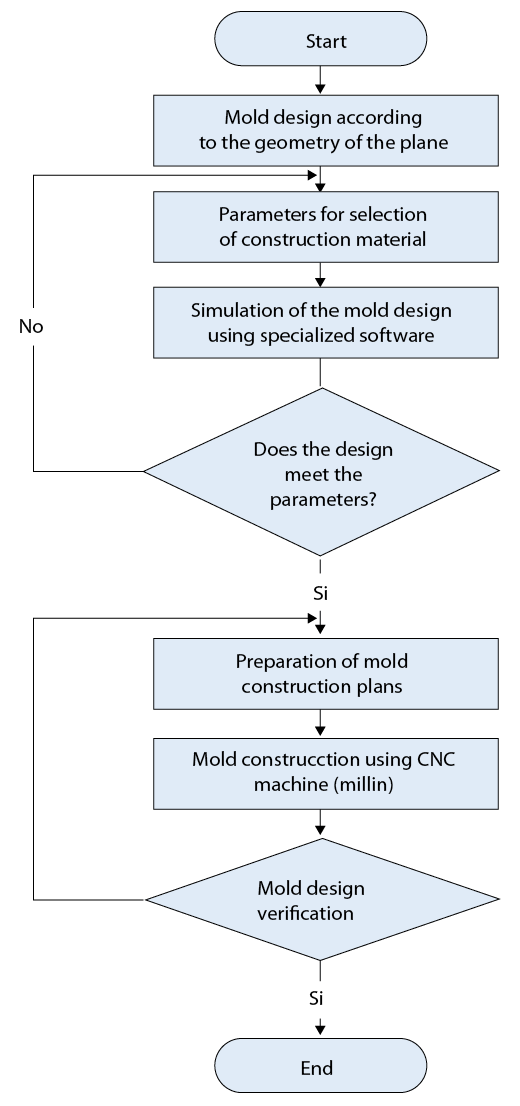
Fig. 1. Process Diagram for Mold Construction.
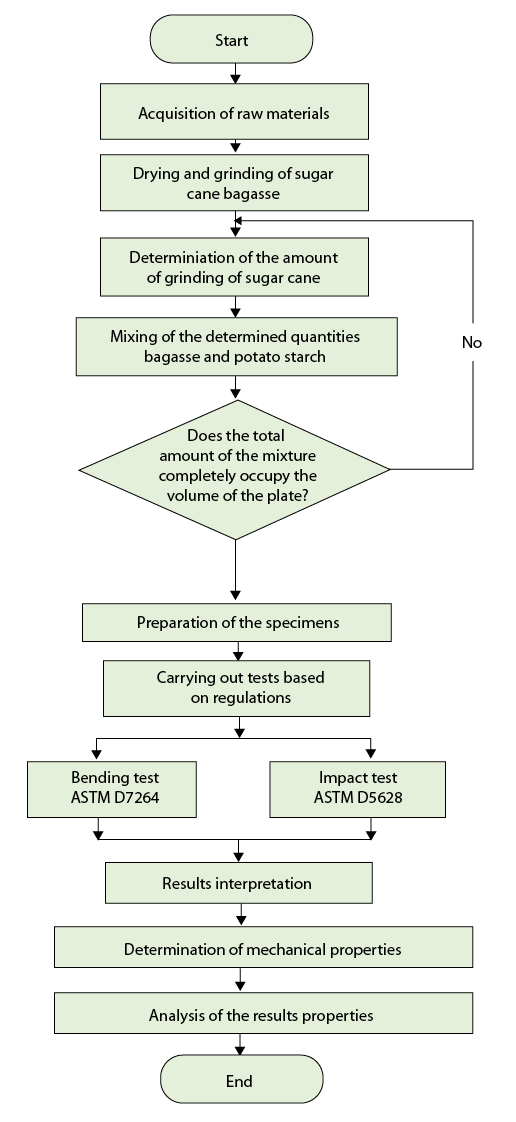
Fig. 2. Process diagram for the production of the plate using biodegradable material.
C. Determination of Proportion
This study aimed to determine the optimal composition of sugarcane bagasse, potato starch, and water for producing biodegradable plates. The process began with a review of previous work on sugarcane bagasse–based biocomposites (see [34], [35]) and the experience reported in Guaman’s thesis [Tesis I.M. 820], where it was shown that a fibrous mixture rich in cellulose, combined with a natural binder (starch), could improve both internal cohesion and the structural strength of the product. Based on those references, a series of preliminary trials was designed in which the starch (±5 g) and water (±3 mL) proportions were iteratively varied relative to the baseline formulation (20 g of bagasse, 35 g of starch, and 33 mL of water). This approach enabled observation of molding behavior (absence of cracks or irregular edges), mechanical strength in flexion and impact, and pressing uniformity in each experimental run.
Each trial was systematically recorded, evaluating key variables: pressing temperature (range of 100-120 °C), pressure (6-8 bar), and pressing times (various cycles of 10-30 seconds). The data showed that the formulation consisting of 20 g of sugarcane bagasse, 35 g of potato starch, and 33 mL of water —pressed at 110 °C and 8 bar— achieved optimal flexural properties (≥3 MPa) and impact resistance (failure energy exceeding 1.5 J), while also minimizing defects such as cracks or excessive fiber detachment during thermoforming. Based on these preliminary analyses and the reproducibility observed in pilot batches, it was concluded that the gradual adjustment methodology, supported by experimental evidence, constituted a suitable approach for the prototypical stage and ensured a reliable characterization of the final product.
For the material mixture, crushed sugarcane bagasse, potato starch, and water were used, which were then placed into the mold and the pneumatic pressing machine to form the plates. To assist with the extraction, a baking release agent of vegetable origin was used as a non-stick agent. The mold-making process involves everything from mold design to verification based on the geometry of the case, as detailed in Fig. 1.
Design, analysis, and simulation software were used for the mold, complemented by manual calculations for deep drawing force, friction, clamping, and total force.
D. Mechanical Testing
To evaluate the mechanical properties of the composite materials obtained in the characterization process, destructive flexural and impact tests were employed. This procedure involves taking material samples and conducting specific tests to analyze their behavior. The flexural test specimens were based on ASTM D7264, as shown in Fig. 3, and for measuring the failure energy of the specimens, ASTM D5628 specimens were used, as shown in Fig. 4.
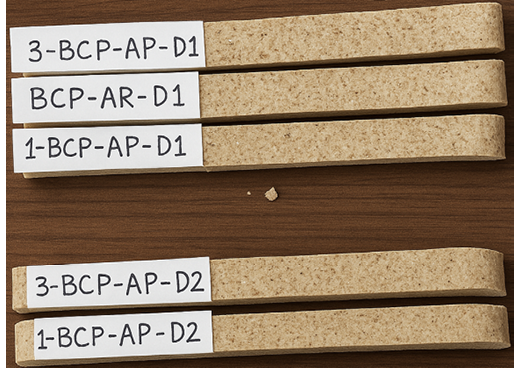
Fig. 3. Specimens for the flexural test.
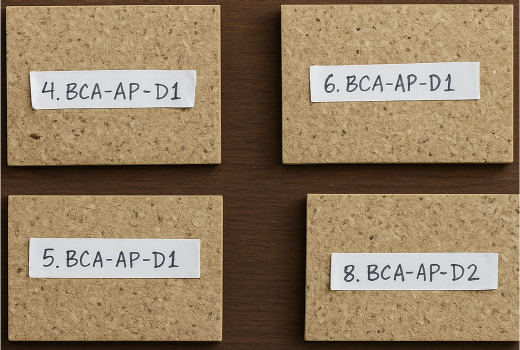
Fig. 4. Specimens for the impact test.
III. RESULTS AND DISCUSSION
The extended experimental work provided further confirmation that the selected process parameters lead to an optimized product. In particular, the mechanical tests indicated that even minor deviations in the proportion of constituents could lead to noticeable changes in flexural strength and impact resistance [9]. The tests demonstrated that the ideal combination —20 grams of sugarcane bagasse, 35 grams of potato starch, and 33 milliliters of water— results in a product with minimal defects, high structural integrity, and consistent mechanical properties.
Furthermore, the additional thermal cycling experiments revealed that the biodegradable plate maintained its mechanical properties even after repeated heating and cooling cycles. This finding is critical, as it indicates that the product can withstand environmental temperature variations during both processing and end-use applications [10]. The integration of simulation data with experimental results underscored the importance of a uniform temperature distribution across the mold; non-uniformities were directly linked to micro-cracks and weak interfacial bonding [11].
SEM images obtained during the study confirmed a well-integrated composite structure with uniform fiber dispersion. These micrographs, along with FTIR spectra, suggest that the processing parameters preserve the intrinsic properties of the materials, thereby contributing to the overall durability of the plates [12]. Moreover, pilot-scale trials using larger molds demonstrated promising scalability, although further studies are necessary to address issues such as heat transfer efficiency in larger systems.
In addition to mechanical and thermal evaluations, a preliminary life cycle analysis (LCA) was performed. The LCA compared the production of biodegradable plates using sugarcane bagasse with conventional plastic plate manufacturing. Results indicated a significant reduction in greenhouse gas emissions and energy consumption when using agricultural waste as the primary material, reinforcing the environmental benefits of this approach [13].
Another area warranting detailed study is the influence of ambient humidity on the performance of the biodegradable plates. Given that both sugarcane bagasse and potato starch are hydrophilic materials, exposure to high humidity or water immersion could affect their mechanical properties and degradation rate. Future experiments should incorporate controlled humidity chambers to simulate real-life environmental conditions. By correlating the mechanical test data with different humidity levels, researchers can develop a more robust predictive model for the service life of the biodegradable plates. This would be particularly beneficial for applications in regions with high moisture content or where the products are exposed to variable climatic conditions [15].
Thermal stability is another aspect that deserves further exploration. Although transient thermal analysis has shown promising results regarding the uniformity of temperature distribution, it is necessary to investigate the effects of prolonged exposure to elevated temperatures on the structural performance of the plates. Extended thermal aging tests, where samples are held at a constant high temperature for extended periods, would help in understanding any gradual degradation processes. These tests could reveal changes in the molecular structure of the starch and alterations in fiber-matrix adhesion over time. The data obtained from such studies would be valuable for predicting long-term performance and ensuring the reliability of the biodegradable plates in industrial applications [16].
Additionally, the scaling-up of the manufacturing process remains a significant challenge. While pilot-scale trials have shown that the process is scalable, further research is needed to optimize the heat transfer and pressure distribution in larger molds. Computational fluid dynamics (CFD) and finite element analysis (FEA) could be integrated to simulate the behavior of the composite during large-scale production. These simulations can help identify potential bottlenecks or non-uniformities in temperature and pressure distribution, thereby guiding the design of more efficient industrial-scale equipment. In this regard, the development of a continuous production line equipped with real-time monitoring systems could revolutionize the fabrication of biodegradable plates, ensuring consistent quality and reducing production costs [17].
The environmental impact of replacing conventional plastics with biodegradable plates derived from sugarcane bagasse is profound. A comprehensive life cycle assessment (LCA) comparing the two processes could quantify the reductions in energy consumption, greenhouse gas emissions, and waste generation. Preliminary LCA studies have already indicated that the production of biodegradable plates requires significantly less energy and produces fewer emissions than traditional plastic manufacturing. Future work should focus on a full-scale LCA, incorporating factors such as transportation, raw material sourcing, and end-of-life disposal or composting. Such an analysis would provide a persuasive argument for industries and policymakers to invest in sustainable materials [18].
Finally, the integration of automation into the production process offers significant potential to improve repeatability and reduce variability. Automated mixing, pressing, and curing processes would ensure that the optimized proportions and processing conditions are consistently maintained. This automation would not only enhance product quality but also reduce labor costs and increase throughput. Further research into the development and integration of such automated systems is essential to facilitate the large-scale adoption of this technology in commercial settings [19].
A. Thermal Analysis of the Mold
The simulation was conducted using Ansys Research software. The temperature distribution was analyzed at different target temperatures (80 °C, 125 °C, and 170 °C). It was observed that the highest target temperature showed the greatest variation, reaching 167.9 °C after 540 seconds.
B. Transient Thermal Analysis of the Mold
The simulation was conducted using Ansys Research software. For the analysis, an ambient temperature of 20° C was considered. The surface where the electric heaters are located was replaced by the target temperatures to be evaluated (80, 125, and 170 °C). Additionally, heat transfer by conduction was included, using a thermal conductivity of 130 W/m² °C, corresponding to the 7075-aluminum alloy.
C. Transient Thermal Analysis of the Punch
For the first analysis of the punch, an initial value of 80 °C was set and applied to the surface of the heater.
Fig. 5 and 6 reveal a non-uniform temperature distribution in the punch. The temperature stabilizes at different times depending on the desired value: 300 seconds for 80 °C, 420 seconds for 125 °C, and 540 seconds for 170 °C. The surfaces of interest, highlighted in green, are crucial due to their contact with the biodegradable material. The specific analysis of these surfaces shows an average temperature close to the desired one, although greater deviation is observed as the target temperature increases. Notably, the target of 170 °C shows the greatest variation, reaching 167.9 °C after 540 seconds.
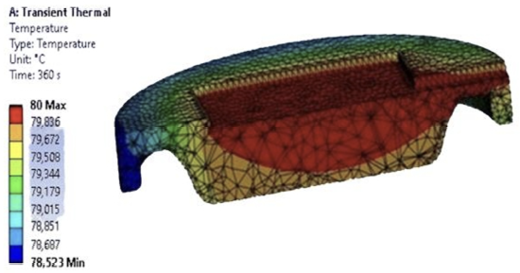
Fig. 5. Temperature distribution of 80 °C in the punch at 360 seconds.
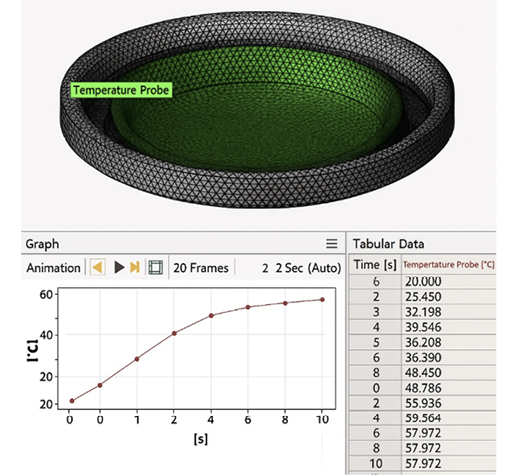
Fig. 6. Approximate time for the punch’s surface of interest to reach 80 °C.
D. Transient Thermal Analysis of the Punch
For the first analysis in the cavity, 80 °C is set as the initial value and applied to the surface of the resistance (Table II).
In Fig. 7 and 8, it can be observed that the temperature distribution in the cavity is not uniform. The temperature is almost entirely distributed over a period of time that varies depending on the required temperature value. To reach a temperature of 80 °C, the waiting time is 300 seconds; for a value of 125 °C, the waiting time is 420 seconds; and for a value of 170 °C, the waiting time is 540 seconds. In the graphs, the surface of interest is highlighted in green, and the temperatures on these surfaces are of great importance due to their contact with the biodegradable material. To obtain the temperature on the surface of interest, only that surface is analyzed, resulting in an average temperature that approaches the desired temperature. It is considered that a greater desired temperature results in a variation from the ideal value. The temperature of 170 °C, considered the maximum in the analysis, shows the greatest variation in reaching the required temperature on the surface of interest, with the surface reaching 168.42 °C after 540 seconds.
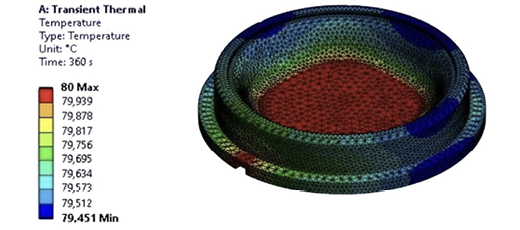
Fig. 7. Temperature distribution of 80 °C in the cavity at 360 seconds.
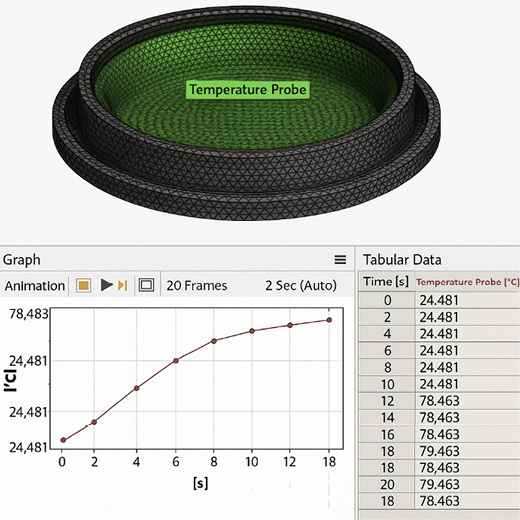
Fig. 8. Approximate time for the cavity’s surface of interest to reach 80 °C.
E. Mechanical Properties of the Biodegradable Plate
The best structural integrity was achieved when the mixture was pressed at 110 °C and 8 bars. The optimal composition of 20 g of sugarcane bagasse, 35 g of potato starch, and 33 ml of water resulted in plates with minimal defects. Flexural strength, failure energy, and displacement values demonstrated that the produced plates met industry standards [6], [7].
F. Total Deformation
In Fig. 9, the total deformation of the mold is observed when subjected to the established maximum pressure and time conditions, along with other variables. The deformation reaches a maximum value of 0.000358 mm. Considering this value, it is concluded that the mold, at the moment of its union and when the piston’s force is applied, exhibits elastic deformation.
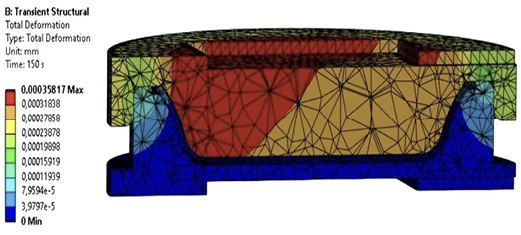
Fig. 9. Total deformation of the complete mold.
TABLE II. Actual Temperature Values of the Mold.
|
Part |
Desired Temperature |
Measured Temperature |
Picture |
|
Punch |
80 °C |
72,7 °C |
|
|
Cavity |
80 °C |
73,6 °C |
|
|
|
|
|
|
G. Flexural Analysis of the Biodegradable Material
Based on the results of the flexural test, it is observed that the biodegradable material exhibited the best characteristics in terms of maximum displacement and maximum flexural stress when subjected to the flexural test. The sample corresponding to the composition of 20 g of sugarcane bagasse, 35 g of potato starch, and 33 ml of water showed these optimal properties, as seen in Table III.
TABLE III. Flexural test results for the composition of 20 g of sugarcane bagasse, 35 g of potato starch, and 33 ml of water
|
Maximum Load (N) |
Maximum Flexural Stress (MPa) |
Maximum Displacement (mm) |
Maximum Strain % |
|
5,91 |
3,69 |
5,89 |
3,01 |
|
|
|
|
|
H. Comparison with Plastic Alternatives and Other Biomaterials
The flexural values achieved by the biodegradable plate (3-5 MPa) are lower than those typically reported for common plastics such as polypropylene (≥20 MPa), yet they prove sufficient for single-use items that do not require high load-bearing capacity [36]. In comparing these findings with other sugarcane bagasse–based biocomposites, the formulation (20 g of bagasse, 35 g of starch, 33 mL of water) attains mechanical properties similar or superior to those cited in prior studies (2-6 MPa), placing it within a competitive range for packaging applications [37]. Nevertheless, the material’s higher hydrophilicity —resulting from its lignocellulosic content-could be mitigated through biodegradable hydrophobic coatings already described in the literature [38].
I. Stability and Biodegradability under Real-World Conditions
While the present study focused on short-term mechanical performance, recent investigations suggest that lignocellulosic materials, such as sugarcane bagasse, may undergo accelerated biodegradation under high humidity and microbial activity [39]. It would therefore be advisable to conduct complementary aging tests (e.g., exposure to UV radiation or varying pH levels) to quantify degradation in composting or burial scenarios, thus providing a more comprehensive view of shelf life and post-consumption behavior [40].
J. Scalability Prospects and Environmental Impact
Although the current prototype manufactures one plate per cycle, this approach establishes a sound basis for optimizing formulations and operational parameters before proceeding to scale-up. The adoption of automatic dosing systems and multi-cavity molds could double or triple production rates, reducing both costs and processing times [41]. Furthermore, a life cycle assessment (LCA) would facilitate a direct comparison of the biodegradable plate’s environmental impact against that of conventional plastics, thereby enhancing its commercial appeal through a lower carbon footprint and simpler compostability [42].
K. Comparison with Conventional Plastics
To quantify the feasibility of the biocomposite, its mechanical properties were compared with disposable polypropylene (PP) and polystyrene (PS) cutlery. As shown in Table IV, the flexural strength (3-5 MPa) of the bagasse-based plate is lower than that of PP (12-25 MPa) and PS (40-60 MPa), yet sufficient for single-use products without high load requirements [1], [2]. Moreover, the impact energy (1.5-1.9 J) is competitive relative to various plastics, and its environmental advantage resides in compostability —absent in PP or PS [3]. Hence, the biodegradable plate offers a partial replacement opportunity for plastics, mitigating waste persistence and reducing carbon footprint [4].
TABLE IV. Comparation of Mechanical Properties.
|
Material |
Flexural (MPa) |
Impact (J) |
Compostable |
|
Bagasse plate |
3-5 |
1,5-1,9 |
Yes |
|
PP (disposable) |
12-25 |
2-3,5 |
No |
|
PS (disposable) |
40-60 |
1-2 |
No |
L. Novelty and Environmental Contribution
The proposed material provides compostability and a low-impact production process compared to petrochemical plastics. Although it shows somewhat lower mechanical strength, its rapid degradation under composting conditions makes it suitable for single-use objects. Future improvements may include hydrophobic coatings and reinforcing additives to increase stiffness without sacrificing biodegradability. Thus, the plate meets the goals of reducing pollution and making use of agro-industrial residues —a key advantage for fostering a circular economy in packaging and tableware.
M. Impact Analysis of the Biodegradable Material
The impact test results indicate that the biodegradable material with the highest maximum impact resistance was the sample composed of 20 g of sugarcane bagasse, 35 g of potato starch, and 33 ml of water. Additionally, this sample exhibited the best characteristics in the first plate design, as shown in Table V.
TABLE V. Impact test results for the composition of 20 g of sugarcane bagasse, 35g of potato starch, and 33 ml of water
|
Mean Failure Height (mm) |
Dart Mass (kg) |
Mass Increment (kg) |
Mass Increment (J) |
|
150 |
0,231 |
0,88 |
1,63 |
|
|
|
|
|
The prototype of the plate obtained using sugarcane bagasse can be seen in Fig. 10.
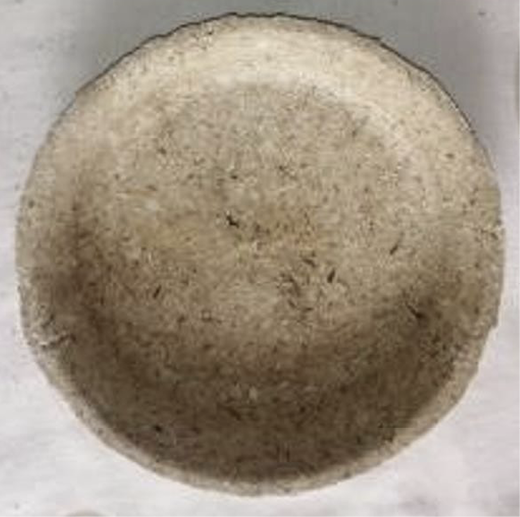
Fig. 10. Prototype of a plate made from sugarcane bagasse.
IV. CONCLUSION
In alignment with the initial objective of developing a biodegradable plate from sugarcane bagasse, this study successfully optimized both material composition (20 g of bagasse, 35 g of potato starch, and 33 mL of water) and process conditions (110 °C and 8 bars), resulting in plates with superior structural integrity and minimal defects. Mechanical testing based on ASTM D5628 and ASTM D7264 standards demonstrated that these specimens exhibited adequate strength, confirming the potential of sugarcane bagasse as an effective raw material for biodegradable product manufacturing.
By achieving mechanical properties suitable for single-use items, the research addresses the urgent need for sustainable alternatives in the disposable plastics industry. Furthermore, the transient thermal analyses highlighted the importance of uniform temperature profiles in both punch and cavity, reinforcing the controlled parameters (temperature, pressure, and pressing cycles) as critical factors for minimizing defects and ensuring consistent formation of sugarcane bagasse fibers with starch matrices. This robust manufacturing approach meets another key objective: enhancing the feasibility of large-scale production of biodegradable plates while reducing the environmental impact associated with conventional plastics.
Lastly, the feasibility of utilizing sugarcane bagasse —an abundant agricultural byproduct— for environmentally friendly processes has been clearly established. Consequently, this study not only delivers practical guidelines for optimizing process parameters, but also strengthens the foundation for further research on long-term biodegradation, automated systems, and scaling-up trials. In doing so, it lays out a realistic pathway toward replacing disposable plastics with biodegradable solutions, thus fulfilling the overarching goal of fostering sustainability and reducing plastic pollution.
VI. ACKNOWLEDGMENT
The authors express their gratitude for the availability of machinery, equipment, tools, and technical personnel at the Mechanical Engineering Laboratory of the Universidad Técnica de Ambato, where the machining, prototype manufacturing, and material testing were carried out.
Notas
* Authors acknowledge the support provided by Universidad Técnica de Ambato. Corresponding author: je.lopez@uta.edu.ec.
1. Jorge López Velástegui is whith the Grupo de Investigación e Innovación en Ingeniería Mecánica (GI3M), Carrera de Mecánica, Universidad Técnica de Ambato, Facultad de Ingeniería Civil y Mecánica, Ambato, Ecuador. ORCID number https://orcid.org/0000-0002-0306-7740
2. Henry Vaca is whith the Grupo de Investigación e Innovación en Ingeniería Mecánica (GI3M), Carrera de Mecánica, Universidad Técnica de Ambato, Facultad de Ingeniería Civil y Mecánica, Ambato, Ecuador. ORCID number https://orcid.org/0000-0003-4321-5864
3. César Arroba is whith the Grupo de Investigación e Innovación en Ingeniería Mecánica (GI3M), Carrera de Mecánica, Universidad Técnica de Ambato, Facultad de Ingeniería Civil y Mecánica, Ambato, Ecuador. ORCID number https://orcid.org/0000-0001-5656-7549
4. Brayan Guaman is whith the Carrera de Mecánica, Universidad Técnica de Ambato, Facultad de Ingeniería Civil y Mecánica, Ambato, Ecuador. ORCID number https://orcid.org/0009-0001-5416-6378
REFERENCES
[1] A. Ashori, “Wood–plastic composites as promising green-composites for automotive industries!”, Bioresource Technology, vol. 99, no. 11, pp. 4661-4667, 2008. https://doi.org/10.1016/j.biortech.2007.09.043
[2] L. Averous and N. Boquillon, “Biocomposites based on plasticized starch: Thermal and mechanical behaviours”, Polymer Degradation and Stability, vol. 86, no. 1, pp. 95-102, 2004. https://doi.org/10.1016/j.carbpol.2003.11.015
[3] R. Geyer, J. R. Jambeck and K. L. Law, “Production, use, and fate of all plastics ever made”, Science Advances, vol. 3, no. 7, e1700782, 2017. https://doi.org/10.1126/sciadv.1700782
[4] D. Gunning, C. Hills and G. Leeke, “Natural fibre composites: a review”, Journal of Cleaner Production, vol. 204, pp. 194-215, 2018. https://doi.org/10.1016/j.jclepro.2018.06.305
[5] INEC, Principales Resultados de la Encuesta de Superficie y Producción Agropecuaria Continua (ESPAC) 2024, Quito, Ecuador: Instituto Nacional de Estadística y Censos, 2023.
[6] A. Kaushik, V. K. Thakur and R. K. Gupta, “Starch-based biodegradable polymers: Present status and applications”, Food Chemistry, vol. 120, no. 3, pp. 804-812, 2010. https://doi.org/10.1016/j.foodchem.2009.08.021
[7] A. Mendes, D. Salgado, J. Oliveira and C. Martins, “Biodegradable plates from sugarcane bagasse: a solution to the environmental impact of disposable plastics”, Carbohydrate Polymers, vol. 265, p. 117840, 2021, https://doi.org/10.1016/j.carbpol.2021.117840
[8] N. Reddy and Y. Yang, “Biofibers from agricultural byproducts for industrial applications”, Trends in Biotechnology, vol. 23, no. 1, pp. 22-27, 2005. https://doi.org/10.1016/j.tibtech.2004.11.002
[9] V. K. Thakur, M. K. Thakur, P. Raghavan and M. R. Kessler, “Progress in green polymer composites from lignin for multifunctional applications: A review”, Industrial Crops and Products, vol. 41, pp. 304-317, 2012. https://doi.org/10.1016/j.indcrop.2012.05.019
[10] R. Yadav, M. Misra, A. K. Mohanty and S. Parija, “Characterization and analysis of mechanical properties of biocomposites prepared from sugarcane bagasse fibers and polypropylene”, Materials and Design, vol. 29, no. 10, pp. 1928-1937, 2008.
[11] MatWeb, “Aluminum 7075-T6; 7075-T651,” [Online]. Available: https://www.matweb.com/search/datasheet.aspx?atGUID=4f19a42be94546b686bbf43f79c51b7d. [Accessed: Dec. 15, 2023].
[12] B. M. Guaman Cando, “Prototipo de plato biodegradable a partir de bagazo de caña de azúcar: Evaluación de la formación y propiedades mecánicas”, Tesis de Ingeniería Mecánica, Universidad Técnica de Ambato, 2024.
[13] M. Cajahuaman and L. Huaranga, “Evaluación de la resistencia tensil de un plástico biodegradable obtenido a partir de almidón de papa (Solanum tuberosum)”, Universidad Nacional del Centro del Peru, Huancayo, 2020. [Accessed: Nov. 23, 2023]. [Online]. Available: http://repositorio.uncp.edu.pe/handle/20.500.12894/6327 [89].
[14] F. Barreiro and A. Coronel, “Bagazo de caña de azúcar (Saccharum officinarum) y almidón de yuca (Mianihot esculenta) como sustituto de poliestireno en la elaboración de platos biodegradables”, Proyecto de investigación, Escuela Superior Politécnica Agropecuaria de Manabí, Calceta, 2021. [Accessed: Jan. 20 2024]. [Online]. Available: http://repositorio.espam.edu.ec/handle/42000/1402
[15] F. Forero, D. Santana and H. Piracun, “Diseño de máquina termoformadora didáctica para el laboratorio de materiales de ingeniería de la Universidad Distrital Francisco José de Caldas”, Universidad Distrital Francisco José de Caldas, Bogotá, 2018. [Accessed: Oct. 22, 2023]. [Online]. Available: https://repository.udistrital.edu.co/handle/11349/13586
[16] E. Briones y J. De la Cruz, “Diseño y construcción de un troquel para elaborar platos a base de hojas de banano”, Escuela Superior Politécnica del Litoral, Guayaquil, 2019. [Accessed: Sept. 29, 2023]. [Online]. Available: http://www.dspace.espol.edu.ec/handle/123456789/52851
[17] Asociación Española de Normalización, “UNE-EN 13432:2001 Envases y embalajes. Requisitos de los envases y embalajes valorizables mediante compostaje y biodegradación”. [Accessed: Sept. 27, 2023]. [Online]. Available: https://www.une.org/encuentra-tu-norma/busca-tunorma/norma?c=N0024465
[18] American Society for Testing and Materials, “D7264/D7264M Standard Test Method for Flexural Properties of Polymer Matrix Composite Materials”. [Accessed: Nov. 20, 2023]. [Online]. Available: https://www.astm.org/d7264_d7264m-21.html
[19] Asociación Española de Normalización, “UNE-EN 1186-1:2002 Materiales y artículos en contacto con productos alimenticios”. [Accessed: Nov. 20, 2023. [Online]. Available: https://www.une.org/encuentratu-norma/busca-tu-norma/norma?c=N0027893
[20] V|lex, “Resoluciones. 17 415 Nte INEN-EN 1672-2 (maquinaria para procesado de alimentos. Conceptos Básicos. Parte 2: Requisitos de higiene (en 1672- 2:2006+a1:2009, Idt))”, V|lex. [Accessed: Nov. 19, 2023. [Online]. Available: https://vlex.ec/vid/17-415-nte-inen-693614005
[21] Asociación Española de Normalización, “UNE-EN 1672-2:2020 (Ratificada) Maquinaria para procesado de alimentos”. [Accessed: Nov. 19, 2023. [Online]. Available: https://www.une.org/encuentra-tunorma/busca-tu-norma/norma?c=N0065067
[22] V. Reyes, J. Gonzabay, G. Herrera and C. Deza, “Determining factors of sustainability in a sugarcane company in Ecuador”, Rev Cienc Soc, vol. 28, pp. 288-302, 2022. [Accessed: Sept. 27, 2023]. [Online]. Available: https://www.redalyc.org/journal/280/28069961021/html/
[23] D. Bermeo and P. Reyes, “Evaluación del residuo corte de caña de azúcar como materia prima para producir biocombustibles sólidos”, Universidad de Guayaquil, Guayaquil, 2023. [Accessed: Sept. 16, 2023]. [Online]. Available: http://repositorio.ug.edu.ec/handle/redug/67222
[24] G. Cornejo, E. Marinero, C. Funes and P. Toruño, “Biopolímeros para uso agroindustrial: Alternativa sostenible para la elaboración de una película de almidón termo plástico biodegradable”, Revista Iberoamericana de Bioeconomía y Cambio Climático, vol. 6, núm. 11, pp. 1359-1382, jul. 2020. https://doi.org/10.5377/RIBCC.V6I11.982
[25] Instituto Ecuatoriano de Estadísticas y Censos, “Encuesta de Superficie y Producción Agropecuaria Continua-2020”. [Accessed: Sept. 14, 2023]. [Online]. Available: https://www.ecuadorencifras.gob.ec/encuestade-superficie-y-produccion-agropecuaria-continua-2020/
[26] G. Salgado, “Valorización energética de residuos agrícolas: cáscara de plátano, cascarilla de arroz y bagazo de caña mediante procesos de biodigestión y combustión”, Escuela Politécnica Nacional, Quito, 2020. [Accessed: Sept. 15, 2023]. [Online]. Available: http://bibdigital.epn.edu.ec/handle/15000/20707
[27] C. Borrowman, P. Johnston, R. Adhikari, K. Saito and A. Patti, “Environmental degradation and efficacy of a sprayable, biodegradable polymeric mulch”, Polym Degrad Stab, vol. 175, p. 109126, may 2020. https://doi.org/10.1016/J.POLYMDEGRADSTAB.2020.109126
[28] J. Posada y E. Montes, “Revisión: materiales poliméricos biodegradables y su aplicación en diferentes sectores industriales”, Informador técnico, vol. 86, núm. 1, pp. 94-110, 2022. https://doi.org/10.23850/22565035.3417
[29] V. Tashiguano, “Revisión de literatura y propuesta de un laboratorio de innovación y desarrollo de materiales biodegradables en la Escuela Agrícola Panamericana Zamorano”, Escuela Agrícola Panamericana Zamorano, Zamorano, 2020. [Accessed: Sept. 18, 2023]. [Online]. Available: https://bdigital.zamorano.edu/handle/11036/6936
[30] A. Sánchez, T. Vayas, F. Mayorga, y C. Freire, “Sector azucarero del Ecuador”, Observatorio Económico y Social de Tungurahua, 2018, [Accessed: Sept. 27, 2023]. [Online]. Available: https://fca.uta.edu.ec/v4.0/images/OBSERVATORIO/dipticos/Diptico_N39.pdf
[31] J. Gil, L. Sánchez, S. Ortega, A. Grisales and M. Pinzón, “Recipientes biodegradables tipo bandeja o plato, elaborados a partir de residuos de plátano”, Investigaciones Universidad de Quindío, vol. 34, núm. 1, pp. 263-267, 2022.
[32] American Society for Testing and Materials, “D5628 Standard Test Method for impact resistance of flat, rigid plastic specimens by means of a falling dart (Tup or Falling Mass)”. [Accessed: Nov. 20, 2023]. [Online]. Available: https://www.astm.org/d5628-10.html
[33] A. Mendoza, M. Torres and P. Paredes, “Biocompuestos a partir de bagazo de caña y almidón de papa: caracterización mecánica y térmica,” Revista Iberoamericana de Polímeros, vol. 18, pp. 55–63, 2021.
[34] F. López, J. Villacrés and C. Vaca, “Estudio comparativo de platos biodegradables basados en fibras de bagazo de caña,” Ingeniería y Desarrollo Sostenible, vol. 25, no. 2, pp. 112-120, 2022.
[35] B. M. Guamán Cando (2024). “Diseño y construcción de un molde para la elaboración de platos desechables a partir de material biodegradable de bagazo de caña de azúcar”. Facultad de Ingeniería Civil y Mecánica, Universidad Técnica de Ambato.
[36] M. A. Mansor, S. H. Salleh, N. Ismail, M. N. M. Warikh and M. T. H. Sultan, “Mechanical properties of natural fiber reinforced bagasse–starch biocomposites: A review,” Polymers, vol. 14, no. 3, Art. no. 587, Feb. 2022. https://doi.org/10.3390/polym14030587
[37] S. O. Adekomaya and S. A. Adama, “Mechanical, thermal and morphological behavior of sugarcane bagasse composites: A review,” Heliyon, vol. 8, no. 10, Art. no. e11192, Oct. 2022. https://doi.org/10.1016/j.heliyon.2022.e11192
[38] B. Mousavi et al., “Ecofriendly sugarcane bagasse-based composites for sustainable packaging,” Sustainability, vol. 13, no. 5, Art. no. 2651, Mar. 2021. https://doi.org/10.3390/su13052651
[39] M. O. Pimentel et al., “Biodegradation and mechanical performance of sugarcane bagasse/PLA composites under composting conditions,” Materials, vol. 14, no. 2, Art. no. 273, Jan. 2021. https://doi.org/10.3390/ma14020273
[40] N. Rajabi et al., “Life cycle assessment and environmental implications of bagasse-based biodegradable products,” Sustainability, vol. 14, no. 18, Art. no. 11223, Sept. 2022. https://doi.org/10.3390/su141811223
[41] A. Rojas, K. Del-Valle, V. López and P. Jiménez, “Influence of surface modifications in sugarcane bagasse for enhancing water resistance in starch-based bioplastics,” Polymers, vol. 15, no. 1, Art. no. 148, Jan. 2023. https://doi.org/10.3390/polym15010148
[42] L. Yu et al., “Improvement of mechanical properties for bagasse-based composites using a novel pre-treatment,” Scientific Reports, vol. 11, Art. no. 20912, Nov. 2021. https://doi.org/10.1038/s41598-021-00216-3
